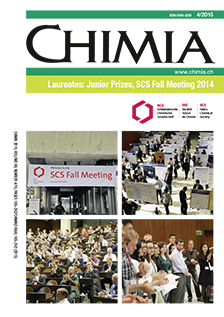Mimicking the in vivo Environment – The Effect of Crowding on RNA and Biomacromolecular Folding and Activity
DOI:
https://doi.org/10.2533/chimia.2015.207Keywords:
Excluded volume effect, Molecular crowding, Rna, Single-molecule förster resonance energy transfer (smfret)Abstract
In vitro studies on macromolecules, like proteins and nucleic acids, are mostly carried out in highly diluted systems where the molecules are studied under artificial conditions. These experimental conditions are optimized for both the system under investigation and the technique used. However, these conditions often do not reflect the in vivo situation and are therefore inappropriate for a reliable prediction of the native behavior of the molecules and their interactions under in vivo conditions. The intracellular environment is packed with cosolutes (macromolecules, metabolites, etc.) that create 'macromolecular crowding'. The addition of natural or synthetic macromolecules to the sample solution enables crowding to be mimicked. In this surrounding most of the studied biomolecules show a more compact structure, an increased activity, and a decrease of salt requirement for structure formation and function. Herein, we refer to a collection of examples for proteins and nucleic acids and their interactions in crowding environments and present in detail the effect of cosolutes on RNA folding and activity using a group II intron ribozyme as an example.
Downloads
Published
Issue
Section
License
Copyright (c) 2015 Swiss Chemical Society

This work is licensed under a Creative Commons Attribution-NonCommercial 4.0 International License.







